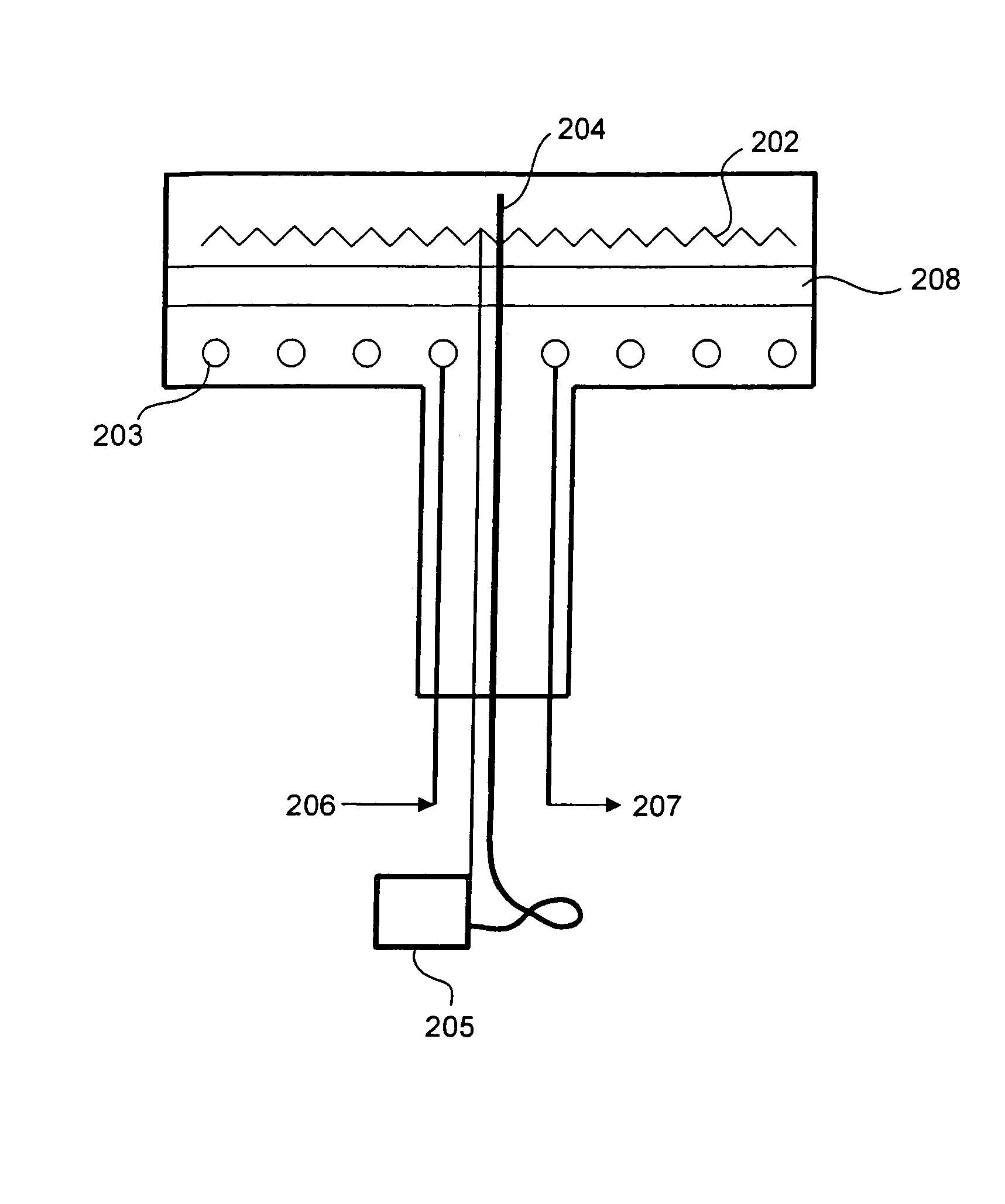Cast pedestal with heating element and coaxial heat exchanger
a technology which is applied in the field of coaxial heat exchanger and heating element cast pedestal, can solve the problems of further mechanical properties, inability to harden or strengthen the film, and softer and mechanically weaker than dense osg films, etc., and achieves heat resistance and high temperature gradient
- Summary
- Abstract
- Description
- Claims
- Application Information
AI Technical Summary
Benefits of technology
Problems solved by technology
Method used
Image
Examples
example 1
[0057]A tube-in-tube heat exchanger was constructed. The tubes were made of stainless steel. The annular gap contained spiral coil also made of stainless steel and air. The pitch of the coil was 0.06 inches. The outer tube had an OD of 0.375 inches and an ID of 0.305 inches. The inner tube had an OD of 0.25 inches and an ID of 0.19 inches. Molten aluminum was poured over the tube-in-tube exchanger and standard resistive heating elements to fabricate a pedestal in one casting. Heating capacity of the heating elements was 8 kW. The heating assembly had fixed operating range of 200° C.-300° C. in the presence of UV lamps that caused 4 kW of incident heat flux on the wafer.
[0058]A wafer was placed on the pedestal and exposed to a high-intensity broadband UV light source. The wafer was exposed to IR heat from 2 kW to 4 kW. Water of inlet temperature 20° C. and exit temperature 50° C. was used as a coolant. Set-point temperatures between 200° C.-300° C. were maintained (within 2° C.).
example 2
[0059]A tube-in-tube heat exchanger was constructed. The tubes were made of stainless steel. The annular gap contained spiral coil also made of stainless steel and air. The pitch of the coil was 0.13 inches. The outer tube had an OD of 0.375 inches and an ID of 0.305 inches. The inner tube had an OD of 0.25 inches and an ID of 0.19 inches. Molten aluminum was poured over the tube-in-tube exchanger and standard resistive heating elements to fabricate a pedestal in one casting. Heating capacity of the heating elements was 8 kW. The heating assembly had fixed operating range of 300° C.-400° C. in the presence of UV lamps that caused up to 4 kW of incident heat flux on the wafer.
[0060]A wafer was placed on the pedestal and exposed to a high intensity broadband UV light source. The wafer was exposed to IR heat from 2 kW to 4 kW. Water of inlet temperature 20° C. and exit temperature 50° C. was used as a coolant. Set-point temperatures between 300° C.-400° C. were maintained (within 2° C....
PUM
| Property | Measurement | Unit |
|---|---|---|
| boiling temperature | aaaaa | aaaaa |
| temperature | aaaaa | aaaaa |
| temperature | aaaaa | aaaaa |
Abstract
Description
Claims
Application Information
 Login to View More
Login to View More - R&D
- Intellectual Property
- Life Sciences
- Materials
- Tech Scout
- Unparalleled Data Quality
- Higher Quality Content
- 60% Fewer Hallucinations
Browse by: Latest US Patents, China's latest patents, Technical Efficacy Thesaurus, Application Domain, Technology Topic, Popular Technical Reports.
© 2025 PatSnap. All rights reserved.Legal|Privacy policy|Modern Slavery Act Transparency Statement|Sitemap|About US| Contact US: help@patsnap.com



